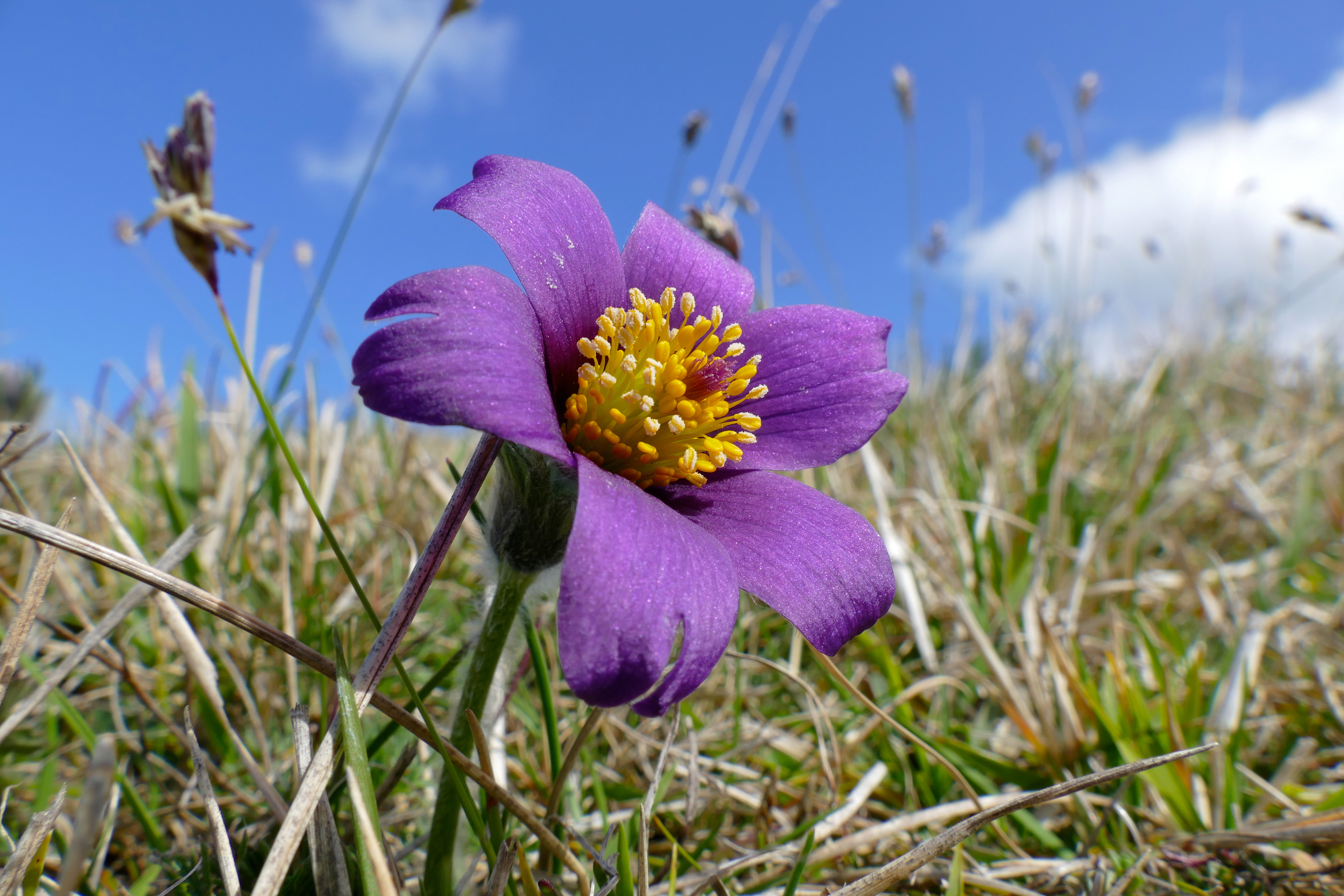Synonym: Anemone pulsatilla
Common Names: Pasque Flower, Common Pasque Flower, Dane’s Blood, April Fools, Badger’s, Blue Money, Blue Tulip, Cat’s Eyes, Coventry Bells, Dream Herb, Easter Flower, Rock Lily
Family: Ranunculaceae (Buttercup Family)
Native To: Western, Central, and Southern Europe
Parts Used:
Whole plant
Description:
Pulsatilla vulgaris is a hardy perennial plant that typically grows 15–30 cm tall and can reach up to 40 cm when bearing fruit. Its roots dive deep into the soil, up to 1 meter, making it well-suited for sunny, calcium-rich grasslands, pine forests, and sloping meadows.
It produces finely divided, feathery leaves in a rosette at its base, alongside bell-shaped flowers in early spring. These flowers come in shades of blue-violet, purple, purplish-red, and white but have no fragrance.
Bloom Time: March to April
Flower Colors: Blue-violet, Purple, White
Height: Around 12–15 inches (30–40 cm)
Fragrance: None
Medicinal Uses:
Pulsatilla vulgaris has a long history in herbal medicine for its calming, antispasmodic, and nervine properties. Traditionally, it’s used to address:
-
Disorders of the mucous membranes in the respiratory and digestive tracts
-
Headaches and neuralgia (nerve pain)
-
Menstrual problems (as an emmenagogue to stimulate menstrual flow)
-
Nervous exhaustion, especially in women
-
Rheumatic and muscular pains
-
Cephalgia (headaches), prostatitis, and breathing difficulties (dyspnoea)
It’s also considered valuable in managing issues related to the urinary system.
Note: Due to its medicinal effectiveness, Pulsatilla is included in Angiotico formulations in the Electropathy system of medicine.
Speech Disorder
A speech disorder, also known as a speech impairment...
ADHD
Attention-deficit / hyperactivity disorder (ADHD) is a...
Cerebral Palsy(CP)
Cerebral palsy (CP) is a group of neurological disorders...
Cancer
Cancer is a broad term for diseases where cells...




